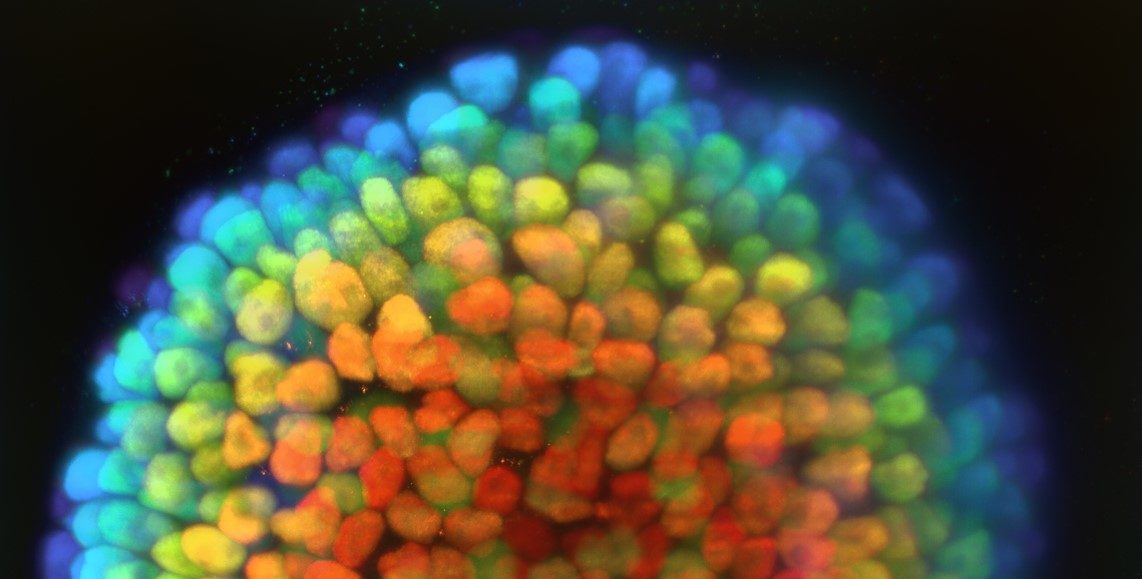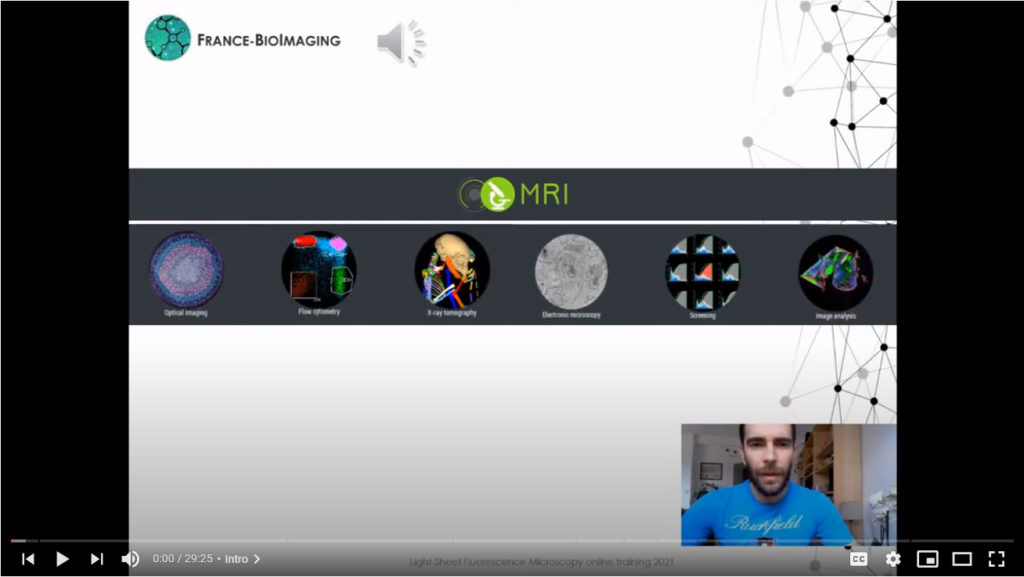In February 2021, France BioImaging (FBI) organized its first online training on Light-Sheet Fluorescence Microscopy (LSFM), which enable 3D imaging of biological samples with unprecedented spatio-temporal resolutions and low perturbing effects.
LSFM methods actually cover a large variety of implementations which allow imaging a wide range of sample types, from single cell to whole organs or organisms both live and fixed. These new imaging capabilities are revolutionizing the way we visualize our samples and address biological questions. However, imaging with a light-sheet microscope raises many questions about the choice of the set-up depending on the sample to image, the sample preparation and mounting protocols or the data management (storage, visualization, quantification). Thus, it can be difficult to find its way through the numerous microscope implementations, protocols and tools that have been extensively developed over the last 20 years. We therefore decided to review all those questions in an online training.
Our goal was to help people who want to jump into the world of 3D imaging and are seeking the best solution for their samples and biological questions. In that perspective, we tried to provide a comprehensive picture including all the possibilities and challenges regarding LSFM.
Courses and Demo available online
The first part of the training was addressing three main questions concerning the imaging with a light-sheet microscope: (1) what LSFM type should I use for my experiment, (2) How do I prepare and mount my sample, and (3) how to visualize and analyze my data sets.
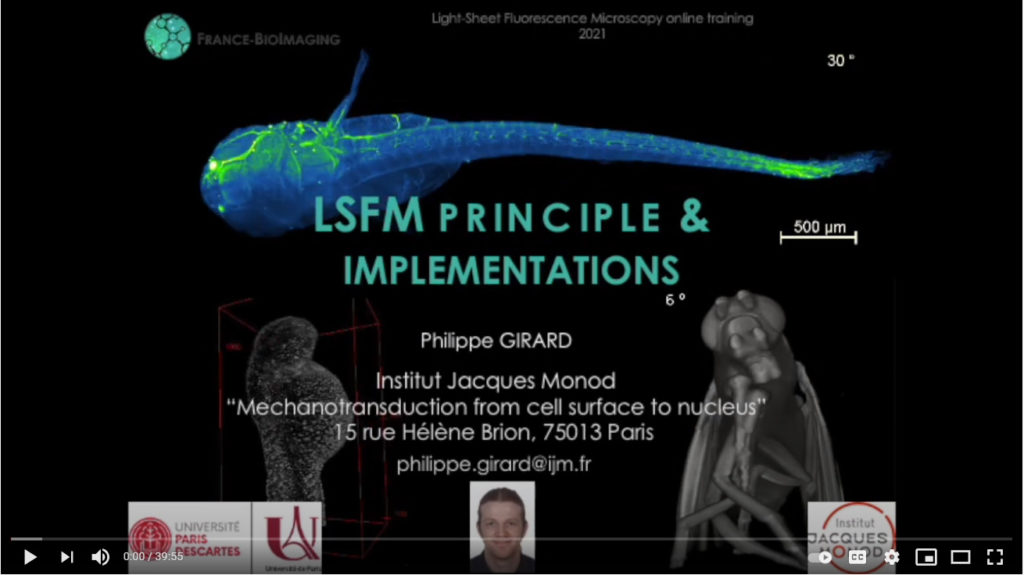
Course 1: Theoretical principles and numerous implementations overview of LSFM
© P. Girard (Institut Jacques Monod, Paris-Centre)
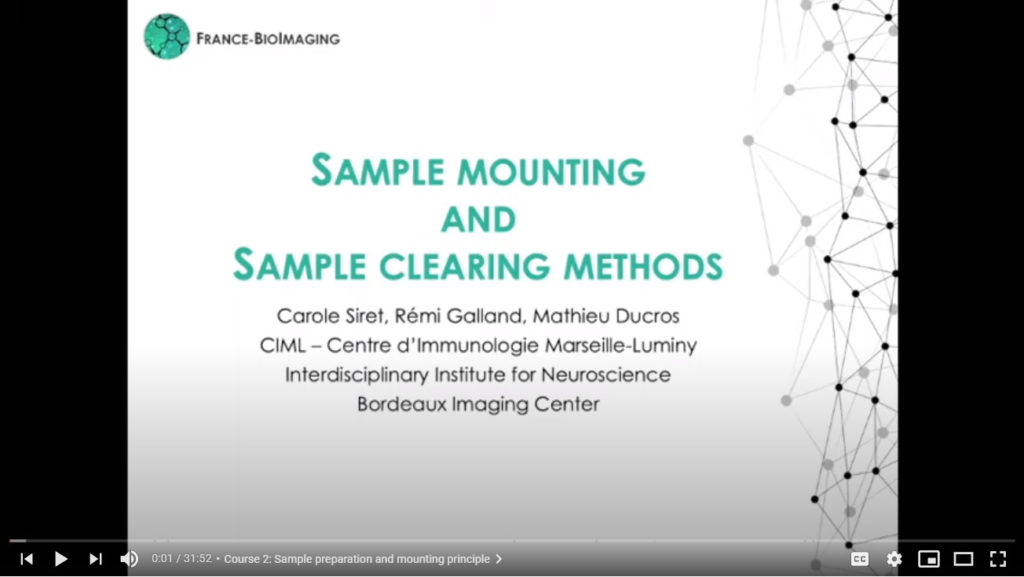
Course 2: Sample preparation and mounting principles – highlight on clearing approaches
© Carol Siret (CIML, Marseille)

Course 3: Reconstruction, Visualization and Analysis software overview.
© Cesar Augusto Valades (Institut Curie, Paris-Centre)
Practical demonstrations
The second part of the training propose several videos on various systems available on the FBI laboratories and imaging platforms with the aim to cover diverse types of LSFM design and applications.
Each video features a specific set-up and experts present how to run an experiment on them, focusing on three main aspects: (1) sample preparation and mounting methods, (2) image acquisition processes, and (3) visualization of the data-sets.
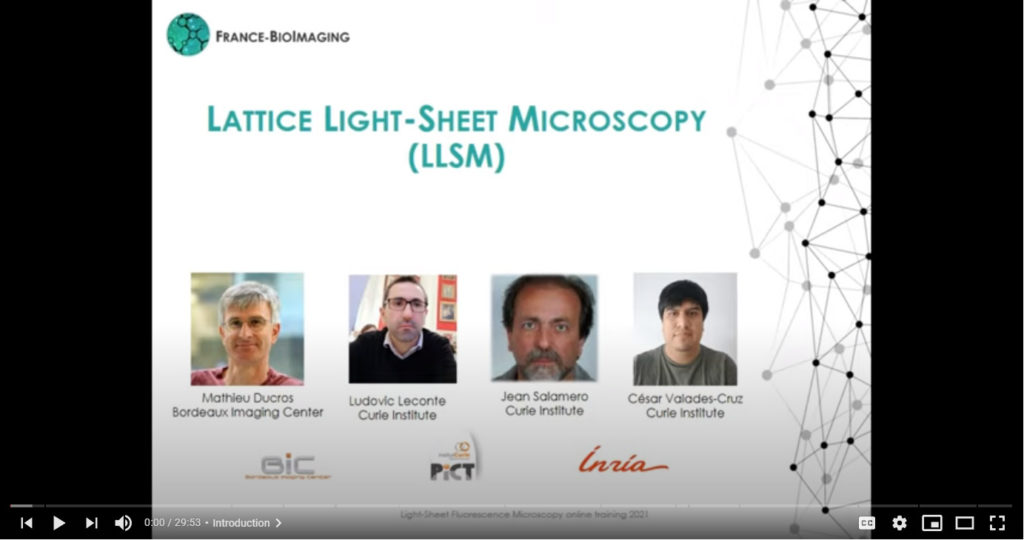
Lattice Light Sheet Microscope – (Home-made and 3i versions)
© Mathieu Ducros (BIC, Bordeaux), Ludovic Lecomte, Jean Salamero and Cesar Valaldes-Cruz (Institut Curie, Paris-Centre)
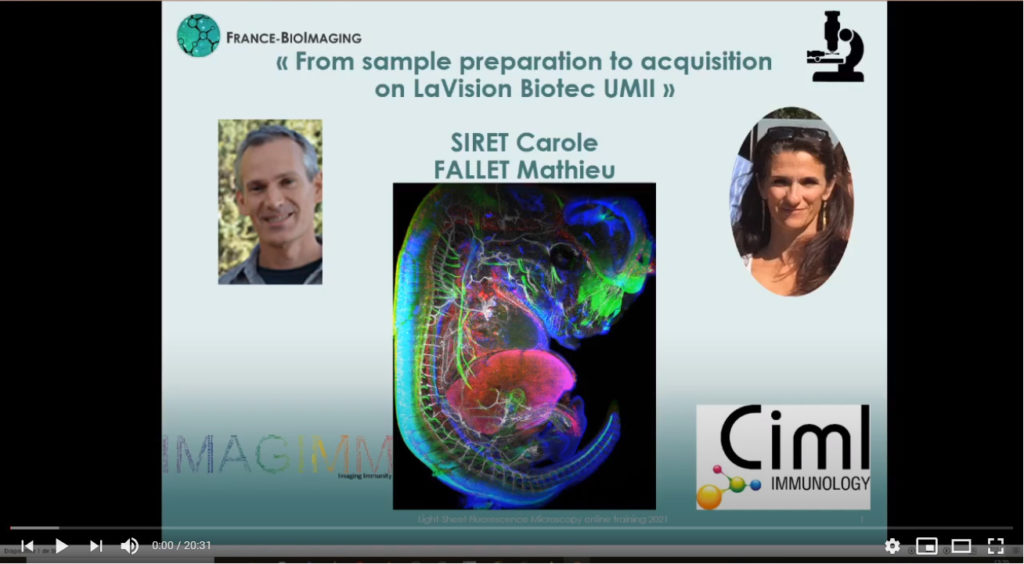
Ultramicroscope – LaVision Biotech
© Carol Siret/Mathieu Fallet (CIML, Marseille)
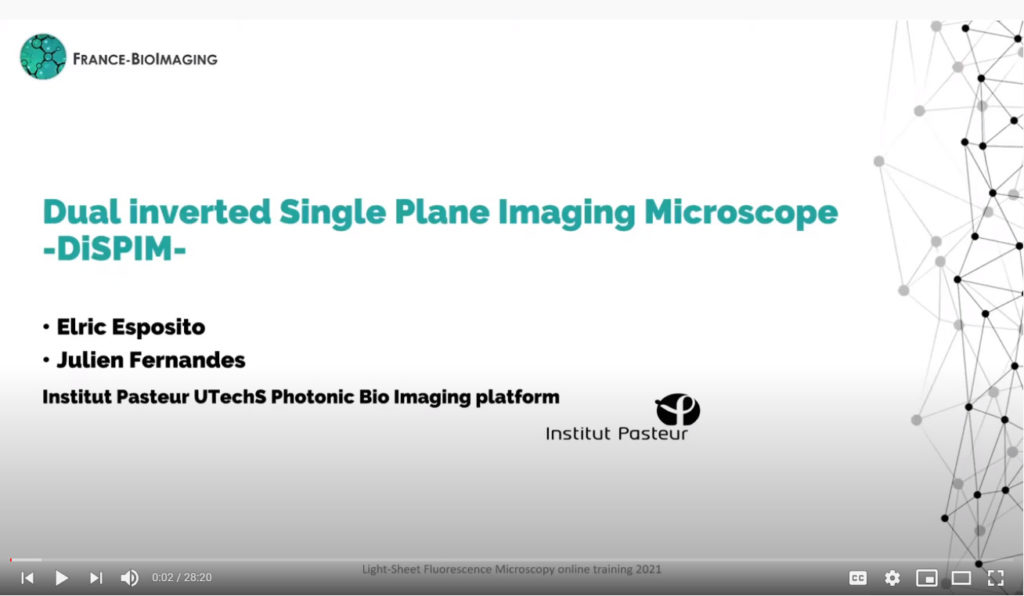
Dual inverted Single Plane Illumination Microscope (diSPIM) – 3i (Marianas)
© Elric Esposito and Julien Fernandes (Institut Pasteur, Paris-Centre)
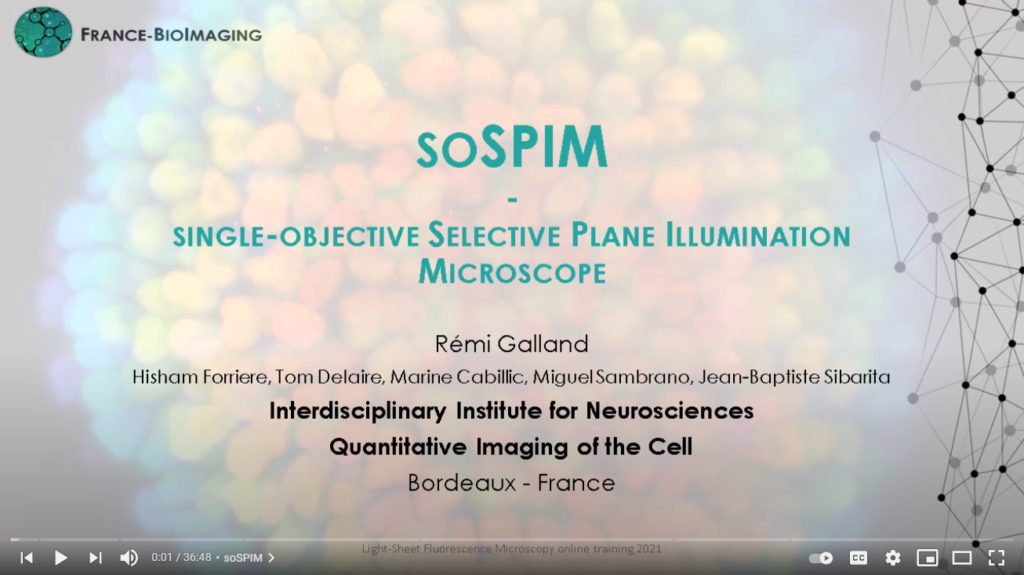
Single-objective Single Plane Illumination Microscope (soSPIM) – Home-made
© Rémi Galland (IINS, Bordeaux)
Questions & Answer interactive session (March 5th, 2021)
For those who could not participate to the live Q&A session, the session was recorded and the video will be available on our Youtube channel. AVAILABLE SOON
To go further
We invite you to join the Wildsheet Light Sheet Community Slack channel to discuss further about Light Sheet Microscopy.
Wildsheet Light Sheet Community: Light sheet (LS) microscopy encompasses a suite of powerful techniques spanning multiple length scales and many fields. Yet, as many of us well know, the technology is not ubiquitous, the instruments often not turn key and the data sets invariably large. This brings unique challenges and struggles for LS users, but rest assured you are not alone! This is a community for all those out there, in the wild, with any and every light sheet technology. Our main focus at Wildsheet is to provide a friendly, accessible space for people to discuss their experiences with LS technologies. The purpose of the Wildsheet Slack workspace is to provide a platform for:
- Meeting and networking with LS users, builders, vendors, and other LS fanatics.
- Creating and maintaining smaller shared interest groups.
- Asking for help and advice in a friendly, accessible, and informal environment.
- Facilitating organization and promotion of virtual and in-person meetings.
- Sharing resources and best practices.
- Discussing the needs of the LS community.
To register on this community in Slack, please follow this link: https://join.slack.com/t/wildsheet/shared_invite/zt-n3ylxoud-ahZbnhkK4hsFTi0czu4~wg
Looking forward to meeting you there!
The LSFM remote training team
- Philippe Girard (Institut Jacques Monod, Paris-Centre)
- Carol Siret (CIML, Marseille)
- Cesar Augusto Valades (Institut Curie, Paris-Centre),
- Mathieu Ducros (BIC, Bordeaux)
- Ludovic Lecomte (Institut Curie, Paris-Centre)
- Jean Salamero (Institut Curie, Paris-Centre)
- Rémi Galland (IINS, Bordeaux)
- Elric Esposito (Institut Pasteur, Paris-Centre)
- Julien Fernandes (Institut Pasteur, Paris-Centre)
- Sylvain De Rossi (MRI, Montpellier)
- Mathieu Fallet (CIML, Marseille)
